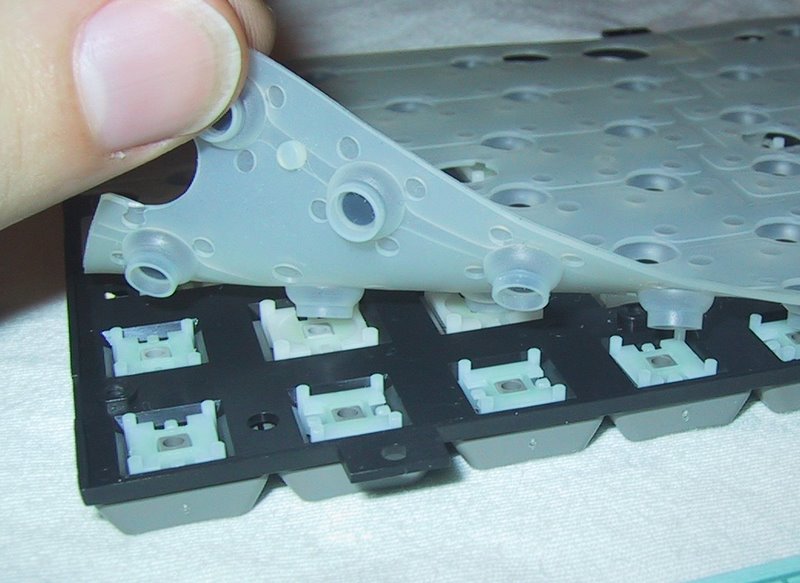The Influence of Membrane Switches on the Development of Wearable Devices
Membrane Layer Switch Over Modern Technology: The Trick to Dependable and Affordable User Interfaces
Membrane switch modern technology has emerged as a crucial component in the design of individual interfaces, offering both dependability and cost-effectiveness across a diverse range of applications. As we explore the complex benefits of membrane buttons, their potential for advancement elevates inquiries concerning future applications and developing trends.
Recognizing Membrane Switch Over Modern Technology
Membrane switch modern technology is a widely made use of interface solution in different digital devices, providing a seamless mix of performance and design. This innovation incorporates multiple layers of products, normally containing a visuals overlay, spacer layer, and a circuit layer. The graphic overlay displays the interface aspects, while the spacer layer divides the circuit layer from the overlay until a customer activates a button.
When stress is related to the overlay, the circuit layer finishes the electrical circuit, sending out a signal to the tool. This device permits numerous setups, consisting of tactile comments and backlighting alternatives, improving customer communication. Membrane layer switches are generally produced utilizing sturdy materials such as polyester or polycarbonate, making certain longevity and resistance to environmental aspects like wetness and dust.
The versatility of membrane layer switches allows their application in diverse sectors, consisting of clinical tools, customer electronic devices, and industrial controls. Their small style enables assimilation into space-constrained settings, offering a reliable interface without compromising aesthetic allure. Comprehending the intricacies of membrane button innovation is crucial for manufacturers and developers seeking to develop reputable and efficient human-machine user interfaces.
Secret Benefits of Membrane Layer Buttons
While numerous interface solutions exist, membrane layer switches deal distinct advantages that make them a recommended selection in numerous applications. Among the main benefits is their resilience; membrane switches are designed to endure rough environmental conditions, consisting of dampness, dirt, and temperature level changes, ensuring durable efficiency. This resilience significantly minimizes the requirement for regular substitutes, thereby decreasing overall maintenance expenses.

Furthermore, membrane buttons are lightweight and small, making them appropriate for applications where room is restricted. Their inconspicuous style adds to a sleek appearance without endangering capability.
Cost-effectiveness is also a significant benefit, as the manufacturing process for membrane changes has a tendency to be less costly compared to typical mechanical buttons. This affordability, integrated with their integrity and ease of installation, settings membrane changes as a useful solution for a variety of industries looking for effective and reliable interface.
Applications Across Different Industries
How do membrane layer switches adjust to the diverse requirements of different sectors? Membrane button modern technology is significantly recognized for its adaptability, making it ideal for a broad array of applications throughout several markets.
In consumer electronics, membrane buttons offer a portable remedy for push-button controls and home devices, improving user experience through intuitive design. Additionally, the commercial market leverages membrane buttons for equipment control panels, taking advantage of their resistance to severe settings, such as moisture and dust.
Armed forces and aerospace applications additionally make use of membrane switches for their dependability and capacity to stand up to severe problems, ensuring functional efficiency in essential situations. In addition, the food and beverage market takes on these switches for automated systems, where hygiene and convenience of procedure are vital. Ultimately, membrane layer buttons are customized to fulfill the unique demands of each sector, showing their vital duty in contemporary technology user interfaces
Design and Modification Choices

In the world of membrane switch innovation, design and personalization choices play an essential function in enhancing capability and individual interaction. These switches can be customized to satisfy details operational needs and aesthetic preferences, making them functional components in different applications.
Among the primary customization options is the layout of the switch itself, which can be developed to accommodate one-of-a-kind interface and ergonomic factors to consider. By adjusting the form, size, and arrangement of buttons, makers can develop user-friendly designs that promote ease of usage. In addition, the incorporation of different colors and graphic overlays allows for branding and enhanced visibility, making certain that customers can quickly identify features.
Furthermore, membrane layer switches can be engineered with numerous responsive feedback mechanisms, such as increased buttons or distinct clicks, to boost the blog here customer experience. Different materials can additionally be picked for toughness and ecological resistance, dealing with variables such as dampness, temperature fluctuations, and chemical direct exposure.
Inevitably, the comprehensive design and customization alternatives description offered in membrane layer button innovation empower companies to develop tailored services that not only fulfill functional needs yet additionally straighten with their branding and operational requirements.

Future Trends in Membrane Layer Switches
As membrane button technology remains to develop, future trends are increasingly concentrated on enhancing user experience and incorporating advanced performances. One substantial fad is the combination of touch-sensitive and capacitive technologies right into standard membrane buttons. This development enables more instinctive customer interfaces, giving tactile feedback while maintaining a sleek design.
An additional arising trend is the usage of eco-friendly materials, driven by the expanding demand for sustainable manufacturing practices. Manufacturers are seeking to reduce their carbon impact by utilizing recyclable substratums and low-impact inks, lining up with worldwide sustainability goals.
Additionally, the increase of the Internet of Points (IoT) is motivating the consolidation of wise features right into membrane layer switches. Enhanced connectivity options will allow tools to communicate with each various other, permitting for smooth assimilation into broader systems.
In addition, advancements in printing modern technologies, such as digital printing, are enabling higher design flexibility and customization. This enables makers to generate intricate layouts and lively shades cost-effectively.

Verdict
In click reference conclusion, membrane button technology stands for a vital advancement in individual interface style, supplying significant advantages in toughness, modification, and cost-effectiveness. As developments proceed to emerge, specifically in touch-sensitive user interfaces and lasting materials, the potential for membrane layer changes to improve individual experience and performance continues to be encouraging.